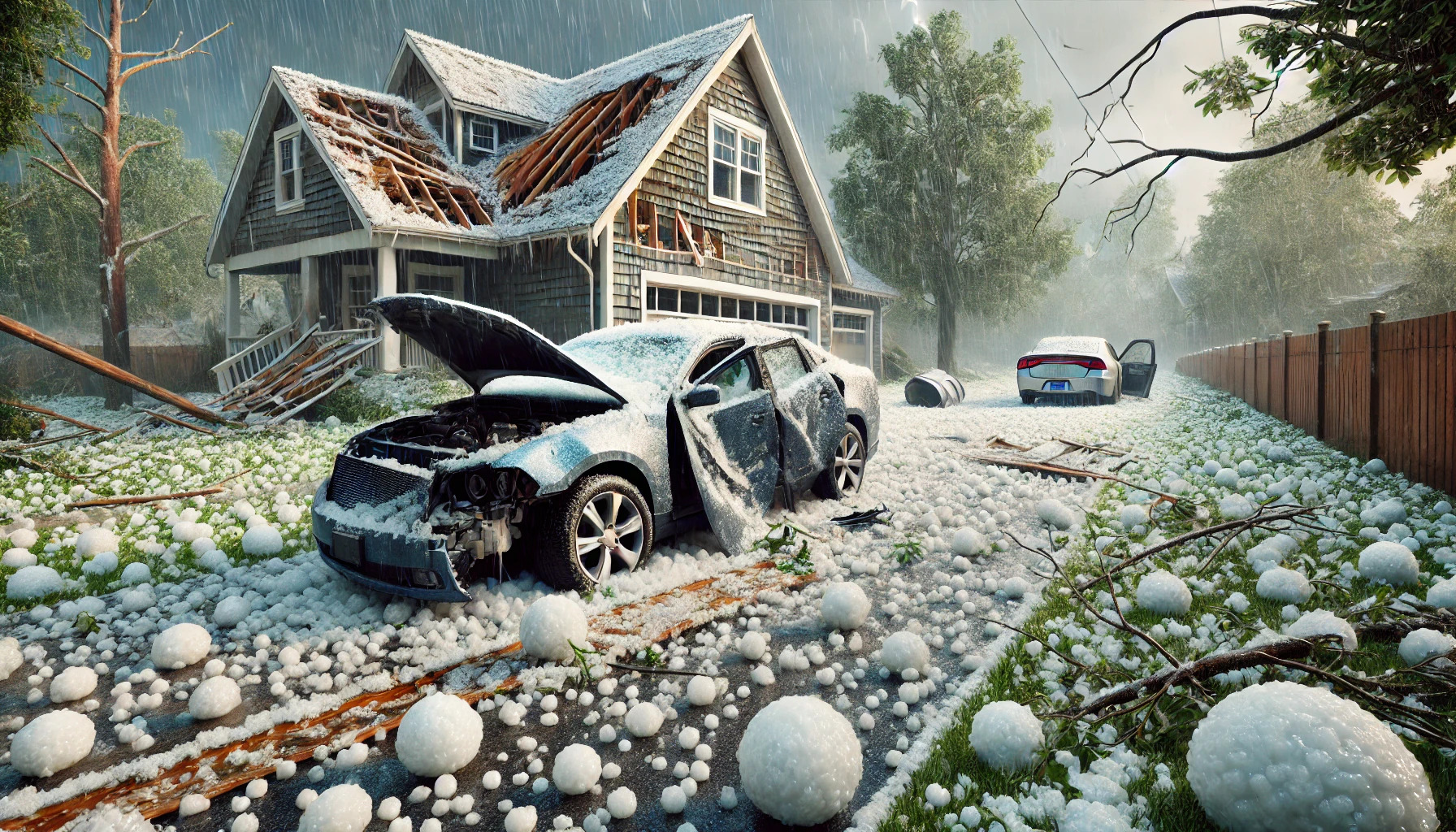Hailstorms can cause significant damage, and some hailstones reach incredible sizes. In the United States, there have been remarkable records of large hailstones that capture attention for their sheer size and weight.
These massive hailstones not only represent nature’s power but also serve as a reminder of the importance of being prepared during storms. Observing these records can spark interest in weather phenomena and encourage awareness of safety measures. Each record provides insights into the phenomena surrounding severe thunderstorms and their potential impact.
Understanding Hailstones
Hailstones are fascinating weather phenomena that form under specific conditions. Learning how they develop and what affects their size can provide better insight into these surprising weather events.
How Hailstones Form
Hailstones begin to form in strong thunderstorms. Inside these storms, updrafts carry water droplets high into the atmosphere where temperatures are below freezing. As these droplets rise, they freeze and become small ice pellets.
Once frozen, these pellets are carried up and down by updrafts and downdrafts in the storm. Each trip through the warm and cold layers of the storm causes the pellets to gather more moisture. Eventually, they grow large enough to overcome the updrafts and fall to the ground as hailstones.
Factors Influencing Hailstone Size
Several factors affect the size of hailstones. One major element is the strength of the updrafts within the storm. Stronger updrafts can keep hailstones suspended longer, allowing them to gather more layers of ice.
Another factor is the amount of moisture available in the atmosphere. More moisture means more water droplets can freeze and add to the hailstones’ size. Additionally, storm temperature and pressure can also influence how large hailstones become during a storm.
These factors work together to create various sizes of hail, from small pea-sized stones to record-breaking sizes.
Historical Weather Phenomena
Hailstorms have been significant weather events throughout history, leaving a lasting impact on communities and prompting the need for precise recording methods. Understanding these phenomena offers insights into their effects and helps refine forecasting.
Impact on Communities
Hail can cause severe damage to property, agriculture, and vehicles. For instance, a notable storm in 2001 swept across Missouri, resulting in damages estimated at $2.5 billion. This event affected homes and businesses alike, showcasing how surprisingly destructive hail can be.
Farmers often face losses due to hail damage to crops, leading to financial hardships. The community may rally together, sharing resources and support to recover from such events. Response teams often assess the damage to provide assistance and guidance in rebuilding efforts.
Recording and Documentation Techniques
Accurate recording of hail events is crucial for understanding their frequency and intensity. Meteorologists use various techniques, including radar technology, to detect hailstorms as they develop. This data helps forecasters issue timely warnings and ensure public safety.
Documents from historical events, like the 8-inch hailstones recorded in Oklahoma in 1935, offer critical insights for future studies. Information is collected through local reports, climate data, and eyewitness accounts, creating a comprehensive understanding of these weather phenomena. Technology continues to improve, enhancing the ability to predict and document hailstorms effectively.
